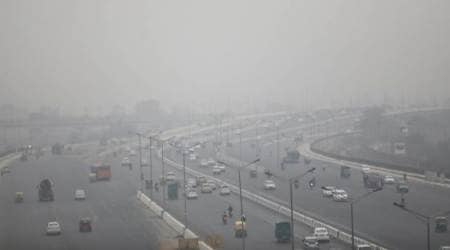 Benzene tends to gravitate towards cooler places, levels of benzene inside homes can be more than outdoor levels. During winter, it hangs in the air for longer durations. (Express File Photo/Neeraj Priyadarshi)
Benzene tends to gravitate towards cooler places, levels of benzene inside homes can be more than outdoor levels. During winter, it hangs in the air for longer durations. (Express File Photo/Neeraj Priyadarshi)
Levels of toxic pollutant benzene are consistently spiking in parts of Delhi, as per Central Pollution Control Board (CPCB) data. Benzene is a known carcinogen and can cause leukaemia upon prolonged exposure.
CPCB sensors located in areas such as Patel Nagar (DMS), Anand Vihar, R K Puram and Punjabi Bagh have recorded high levels of the compound in recent months. In January, the DMS monitoring station in west Patel Nagar recorded benzene levels as high as 24.4 micrograms per cubic metre (µg/m3) on certain days, while the monthly average hovered around 8 µg/m3.
The annual prescribed standard of the highly volatile compound — mainly a product of vehicle exhaust, fuel vapour and burning of wood — is 5 µg/m3, as per the National Ambient Air Quality Standard (NAAQS), 2009.
According to official documents, last month, CPCB had put data collected at the Punjabi Bagh station under “scrutiny” after benzene levels were found to be “exceptionally high”, with the monthly average being 37.8. “Benzene: Standard for this parameter is defined annually in NAAQS 2009, therefore its exceedence cannot be determined based on 24 hour or monthly data. But Punjabi Bagh station at Delhi has shown exceptionally high value of this parameter (20-79 µg/m3), so data is placed under scrutiny,” states the report.

Incidentally, the Punjabi Bagh station is run by the Delhi Pollution Control Committee, which said the data may be an outcome of “instrumental error”. While the CPCB did not respond to queries on whether the data was actually scrutinised, DPCC, in a report to the NGT, put the January figures at a much lower level — with the highest being 10.5 µg/m3 on January 13.
Associate Professor of Chemical Engineering in Columbia University Faye Mcneill told The Indian Express, “Exposure to high concentrations of benzene is proven to cause cancer. Sources of benzene in these ‘hotspots’ should be controlled….”
T K Joshi (Projects), Director, Centre for Occupational and Environmental Health, said that while levels of benzene usually remain high during winter, it has been found to be high around AIIMS in the past and areas such as Civil Lines and IGI Airport. “The level of damage benzene can cause depends on individual susceptibility. It is especially bad for women, children and obese people,” he said.
Joshi added that since the compound tends to gravitate towards cooler places, levels of benzene inside homes can be more than outdoor levels. During winter, it hangs in the air for longer durations, he said.
Last year, a plan to fight air pollution — prepared by an SC-appointed Environment Pollution (Prevention & Control) Authority (EPCA) — had recommended installation of vapour recovery systems in refuelling outlets to reduce benzene emissions in Delhi-NCR. Anumita Roychowdhury from the Centre for Science and Environment, involved in drafting the EPCA report, said, “We need to look at the causes behind these spikes and the status of installation of vapour recovery systems.”
For all the latest Delhi News, download Indian Express App
Get assembly election result LIVE updates from each constituency in Tripura, Nagaland and Meghalaya
























